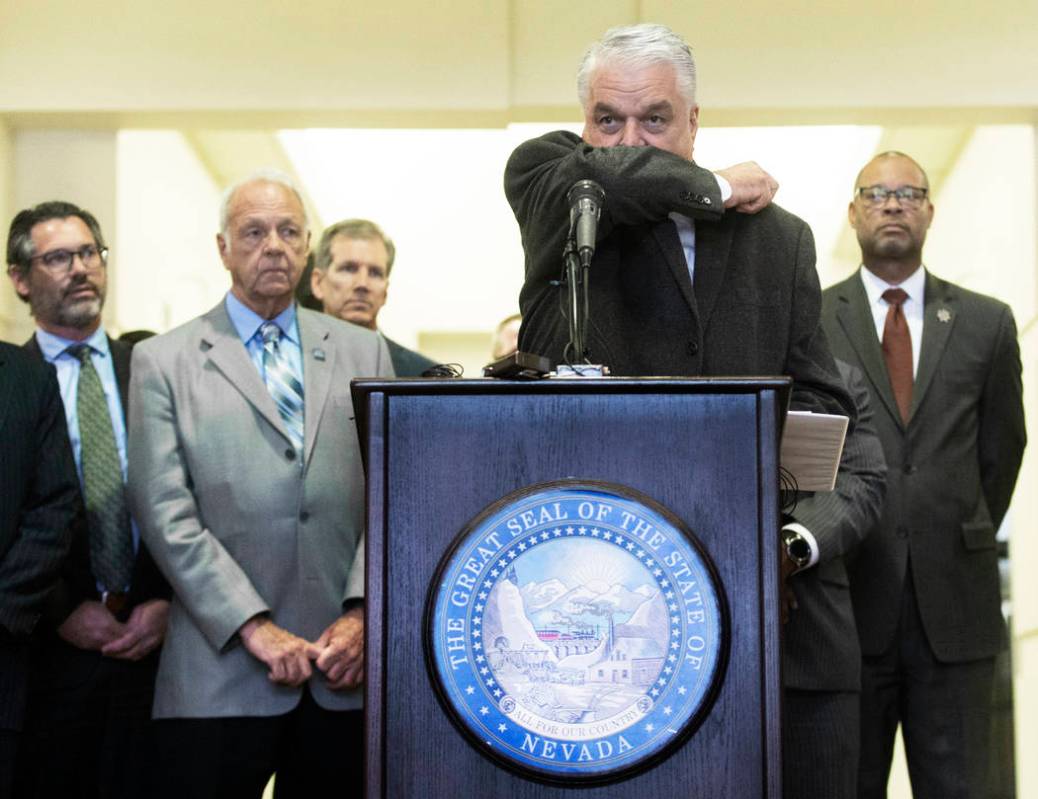
The protocol to treat those with infectious diseases at Boulder City Hospital was put to the test late last month when a patient walked in with symptoms they said could be associated with COVID-19.
In about four hours, staff members were able to determine the patient did not have the virus, but appeared to have a common cold and could be released, said Tom Maher, hospital CEO.
Andre Pastian, director of nursing operations, said staff members were in contact with officials at the Southern Nevada Health District the entire time the patient was at the facility.
A physician, nurse, respiratory therapist and the lab worked together to determine what illness the patient had and what steps needed to be taken to protect other patients and staff members from exposure.
As of Tuesday, about 120 cases of COVID-19 were reported in 15 states and nine people had died. So far, no confirmed cases have been reported in Nevada.
It’s “not a question of if, it’s when,” said Ihsan Azzam, chief medical officer for the state Division of Public and Behavioral Health, when he briefed members of the governor’s Patient Protection Commission on Monday on the latest numbers of those affected by the virus and what’s being done in Nevada to prepare for it.
Seven people in Nevada with possible cases of COVID-19 have tested negative for the disease, state health officials said Friday following a briefing for news media. The Nevada State Public Health Lab has the capability to test for the virus.
State officials say more than 200 people in Nevada are being monitored for the virus and have been asked to self-quarantine. The virus has an incubation period of two to 14 days.
Effective protection
Pastian said the protocol for dealing with patients with infectious diseases has been in place at Boulder City Hospital for a long time and has been effective in helping protect staff and the public from ailments such as severe acute respiratory syndrome, Middle East respiratory syndrome, Ebola and H1N1.
“It starts at the front door,” she said, adding that if the person says they have been out of the country they are immediately given a mask to put on.
She said “the staff all knows what to do” to protect themselves — and others — including putting on protective masks, gloves and gowns.
Pastian said masks are not necessary for the general public but are crucial for those who are coughing to help prevent the spread of germs.
Maher and Pastian stressed the need to save personal protective equipment for those situations where they are truly required because much of it is manufactured in China and supplies are limited because of the prevalence of coronavirus in that country.
If it becomes necessary, the hospital is an active member of the coalition that can help them declare an emergency situation while allowing them to continue to operate, Maher said. Emergency credentials would allow them to treat people outside the building to prevent others from being exposed and get emergency supplies as needed.
Lower respiratory ailment
The criteria to determine if an illness is novel coronavirus disease 2019 changes nearly daily, Pastian said. Currently, they look for a fever, cough and shortness of breath.
She said it’s a lower respiratory virus while “everything else is upper respiratory.”
The hospital has two rooms with negative airflow for those with respiratory illnesses so they can be isolated from the remainder of the facility, Maher said.
As medical professionals continue to learn more about the virus, which was first seen in December, Pastian recommends people take basic precautions: Wash your hands, stay away from those who are coughing and keep your hands away from your face.
Maher said statistics have shown that people touch their faces an average of 20 times an hour.
“Stay out of large groups. Stay home and watch TV,” she added.
These precautions will also help protect people against influenza, which has a higher fatality rate than COVID-19, Pastian said.
Pastian said based on China’s confirmed cases, the virus has a mortality rate of 3 percent, compared to the United States’ mortality rate of 7 percent from influenza and pneumonia combined.
“We’re here for you,” Maher said.
Pastian added that the hospital’s doors are open and staff will answer questions anyone has about COVID-19 and infectious control.
Hali Bernstein Saylor is editor of the Boulder City Review. She can be reached at hsaylor@bouldercityreview.com or at 702-586-9523. Follow @HalisComment on Twitter.